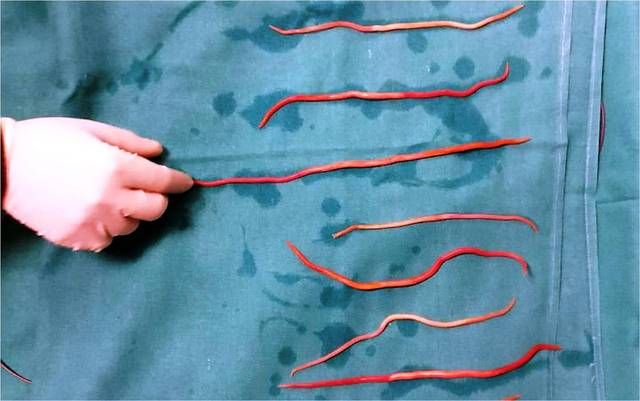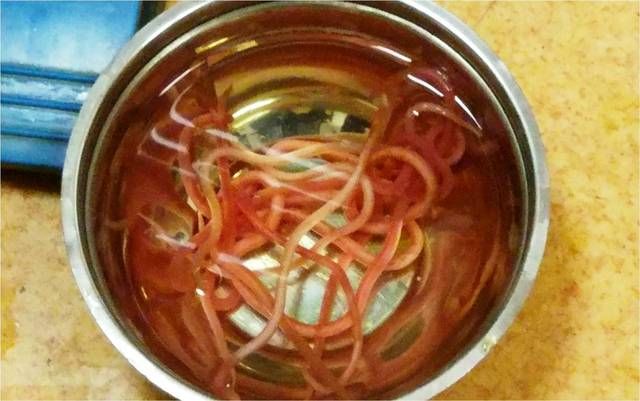|
|
Post by HAL on May 2, 2018 19:07:48 GMT
crystal,
Thanks for the link.
Might I suggest it could be a Chinook seen at an odd angle. The top section definitely gives the impression that there could be rotors.
Hopefully others will report it.
HAL
|
|
|
|
Post by WingsofCrystal on May 2, 2018 22:55:27 GMT
crystal, Thanks for the link. Might I suggest it could be a Chinook seen at an odd angle. The top section definitely gives the impression that there could be rotors. Hopefully others will report it. HAL
Crystal |
|
Deleted
Deleted Member
Posts: 0
|
Post by Deleted on May 3, 2018 13:17:54 GMT
Just when you put my mind at ease Ed..along comes this  www.telegraph.co.uk/science/2018/05/02/mobile-phone-cancer-warning-malignant-brain-tumours-double/ www.telegraph.co.uk/science/2018/05/02/mobile-phone-cancer-warning-malignant-brain-tumours-double/The paper: ehp.niehs.nih.gov/wp-content/uploads/2017/08/EHP935.alt_.pdf
Conclusions
This prospective study, conducted over 22 y of follow-up with time-varying and objective measures of ambient LAN across the contiguous United States, provides evidence that women living in areas with high levels of outdoor LAN may be at higher risk of breast cancer even after accounting for individual and area level risk factors for breast cancer. Athough further work is required to confirm our results and to clarify potential mechanisms, our findings suggest that exposure to outdoor light at night may contribute to breast cancer risk.
Not entirely conclusive. Sounds like it falls into the correlation does not necessarily mean causation bucket. Maybe the link has more to do with other factors involved with night shift workers and not driving to work under outdoor lights. A lot more work is needed. I do notice how this story and the references to this study are now popping up over the last few days. Many if not most bother to link to the actual paper. The usual too often practice employed with these type stories nowadays it seems. I doubt any of the authors even bother to read the paper but rather pass the same quotes along. The good old "Scientists say ......" technique.  |
|
Deleted
Deleted Member
Posts: 0
|
Post by Deleted on May 3, 2018 13:44:21 GMT
|
|
|
|
Post by GhostofEd on May 3, 2018 13:45:21 GMT
Yea, but then there's this: “It’s important, though, to understand that this new paper did not examine any new data at all about potential causes for the increase.”Gotta love how this little caveat was taken into account when the title of the story was conceived - Mobile phone cancer warning as malignant brain tumours double
I still don't get why none of these stories give a direct link to the study itself. Nah, I know why. I'm not impressed with the Telegraph science reporting based on the other stories they promote on the page of this one. After all these years I've only found one reliable source of news I can trust - LINK  |
|
Deleted
Deleted Member
Posts: 0
|
Post by Deleted on May 3, 2018 13:48:44 GMT
They are good..I fell for them once..God only knows how many others.  |
|
|
|
Post by WingsofCrystal on May 3, 2018 14:06:40 GMT
Good morning lovely UFOCasebookers
Science Alert
A Home DNA Test Kit For Humans Found This Golden Retriever Would Make a Great Cyclist
Fail.
MIKE MCRAE
3 MAY 2018
A journalist working for NBC 5 in the US has road-tested a handful of mail-order DNA analysis services, only to find they all gave conflicting results.
On top of that, one of the companies couldn't even recognise the difference between human DNA and that of a dog named Bailey. According to their report, Bailey is genetically well suited to playing basketball and long distance cycling.
Reporter Phil Rogers (and his faithful pooch) conducted their n=2 trial as part of a recent NBC5 Investigates segment, randomly purchasing a bunch of test kits and sending back the required biological samples for a readout.
Results were diverse, to say the least. Based on the feedback, Roger could confidently gamble that his ancestors came from the northern parts of the UK. Or perhaps Western Europe. Maybe Scandinavia? It really depended on which kit he used.
To add to the confusion, a third service concluded his genetic markers matched populations in Kuwait, Ireland, Austria, and Afghanistan, with a slightly lower chance of matches in Peru and Guyana.
As for Bailey, since most of the kits admitted they couldn't decipher the dog's genetic material, we have no idea what this golden retriever's pedigree is.
But at least we know what sports she'd excel at. According to a seven-page report from the US$29 "Superhero" service offered by Orig3n DNA, Bailey's genes promise a muscle force that would suit her to quick movements: perfect for boxing and playing basketball.
She was also reported to have genes associated with a heart that was well suited to long distance events like cycling and running.
According to Rogers' report, Orig3n DNA hadn't yet responded to questions. Without knowing the exact details of what was being analysed, we shouldn't be overly critical.
We wouldn't say this trial-by-reporter amounts to a robust clinical evaluation of these services, and it's not even an entirely new idea. But the NBC 5 segment does draw attention to the question of what consumers should expect from this emerging field of technology.
We've all seen the advertisements – for up to a couple hundred dollars you can discover anything from your ancestral ethnicity and genealogy to health risks and genetic fitness in various fields.
At least, that's the sales pitch.
Apparently we can't get enough of them, with more than 12 million people purchasing these services worldwide. The 23andMe DNA test kit was among the top five items sold on Amazon during the 2017 Black Friday sale.
The fundamental science behind the process seems solid enough – lowering costs and increasing speeds in DNA sequencing technology now makes it affordable for the average Joe to have key sections of their genetic code deciphered with relative accuracy.
But while reading bases in a strand of DNA is one thing, making sense of those codes is another - and this is where it's still early days for genetic screening.
Determining ancestry, for example, relies on having a sizeable database of markers taken from populations across the globe; some services do claim to have this.
"One of Ancestry's accuracy advantages comes from combining the world's largest DNA network of more than 7 million people with more than 10 billion historical records, and 100 million family trees," the company Ancestry told Rogers in a statement.
Those sound like big numbers, but reliability would also demand the right algorithms to turn data into meaningful statistics. How much trust we should place in those services, especially in absence of regulatory bodies, leaves plenty of room for debate.
For the most part, it's tempting to dismiss quick-and-easy DNA testing as harmless fun.
But in cases where individuals are seeking information for important health decisions, from determining their diet to estimating chances of developing cancer, cheap genetic interpretation services could be dangerously misleading.
Improvements in DNA sequencing technology in recent decades have undoubtedly revolutionised genealogy and medicine. Meanwhile, market regulations, data security, and general knowledge on the topic are slow to catch up.
In the future, home DNA testing kits could well play a central role in in the healthcare revolution we hope for.
Unless Bailey happens to win this year's Tour de France, for the time being we should probably take these DIY DNA screens with a grain of salt.
www.sciencealert.com/nbc5-report-home-dna-kit-confuses-golden-retriever-for-human
Crystal
|
|
|
|
Post by GhostofEd on May 3, 2018 14:14:47 GMT
|
|
Deleted
Deleted Member
Posts: 0
|
Post by Deleted on May 3, 2018 14:55:56 GMT
|
|
Deleted
Deleted Member
Posts: 0
|
Post by Deleted on May 3, 2018 16:01:43 GMT
|
|
|
|
Post by thelmadonna on May 3, 2018 17:20:53 GMT
|
|
|
|
Post by swamprat on May 3, 2018 18:45:28 GMT
Grow your own bait!Another feel-good story. Doctors Pulled 14 Squirming Roundworms from a Woman's Bile Ducts
By Rachael Rettner, Senior Writer | May 2, 2018

Doctors in India removed 14 roundworms from a patient's bile duct. Credit: Goal Post Media/SWNS
If the idea of a single 7-inch (18 centimeters) worm wriggling inside your body sounds horrifying, try 14 of them. That was the case for a woman in India who had more than a dozen squirming roundworms pulled from her bile ducts.
The 38-year-old woman went to the hospital after experiencing severe abdominal pain, fever, vomiting and episodes of jaundice (yellowing of the skin and eyes) for six months, according to South West News Service (SWNS).
"My pain was so bad that I could barely stand on my feet," the woman, whose first name is Sunita, told SWNS. She added that she lost more than 26 lbs. (12 kilograms) in about one month during her illness.
Sunita was originally misdiagnosed and was given antibiotics before doctors found the real cause of her symptoms: A CT scan revealed 14 roundworms in her bile ducts, the tubes that carry bile from the liver and gallbladder to the small intestine. The roundworms were about 6 to 8 inches (15 to 20 centimeters) long.

The roundworms after they were removed. Credit: Goal Post Media/SWNS
The SWNS report did not specify the exact type of roundworm that was removed from the woman's gut. However, Dr. Peter Hotez, the dean of the National School of Tropical Medicine at Baylor College of Medicine in Houston, said that the worms appear to be Ascaris lumbricoides, a type of intestinal parasite. This parasite is "one of the most common agents of human disease in the world," said Hotez, who was not involved in the woman's case.
An estimated 800 million people worldwide have Ascaris worms in their intestinal tract, Hotez told Live Science, and the roundworm is extremely common in India.
People become infected with this worm when they ingest eggs from the parasite, and this can happen when people eat fruits or vegetables that have been grown in contaminated soil, according to the Centers for Disease Control and Prevention.
And it's not that uncommon to see Ascaris in the bile ducts, Hotez said. Although the worms live in the small intestine, "they'll wander out of the intestinal tract and into the bile duct, where they can cause obstruction," he said. This complication is seen more often in adults than in children. But in kids, a large number of these worms can block the intestine and cause life-threatening complications, he added.
In Sunita's case, doctors removed the worms with the help of an endoscope — a long, flexible tube with a camera attached that reaches the bile ducts through the mouth. This procedure does not require surgery, her doctors said.
"Once [Sunita was] properly diagnosed, we managed to remove all the roundworms endoscopically in a single session," Dr. Arvind Khurana, head of gastroenterology at Fortis Hospital in New Delhi, who treated the patient, told SWNS.
Sunita is now pain-free and recovering, according to SWNS.
www.livescience.com/62461-roundworms-bile-ducts.html?utm_source=notification
|
|
Deleted
Deleted Member
Posts: 0
|
Post by Deleted on May 3, 2018 19:00:18 GMT
Lol a teaspoon of turpentine in castor oil would have cleaned her out fast..
|
|
|
|
Post by WingsofCrystal on May 3, 2018 21:41:15 GMT
Lol a teaspoon of turpentine in castor oil would have cleaned her out fast.. 😬 |
|
Deleted
Deleted Member
Posts: 0
|
Post by Deleted on May 3, 2018 22:47:14 GMT
|
|